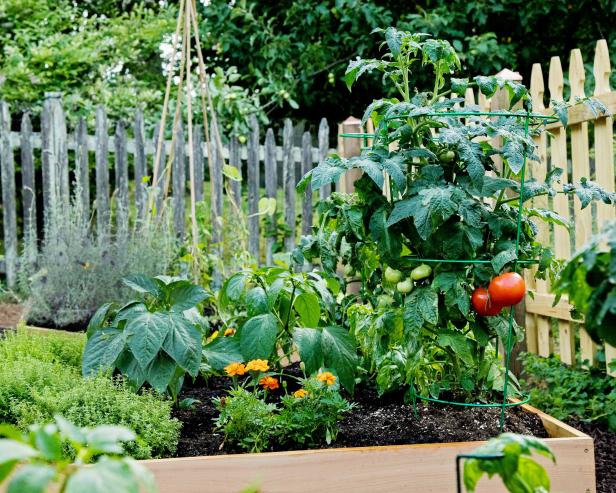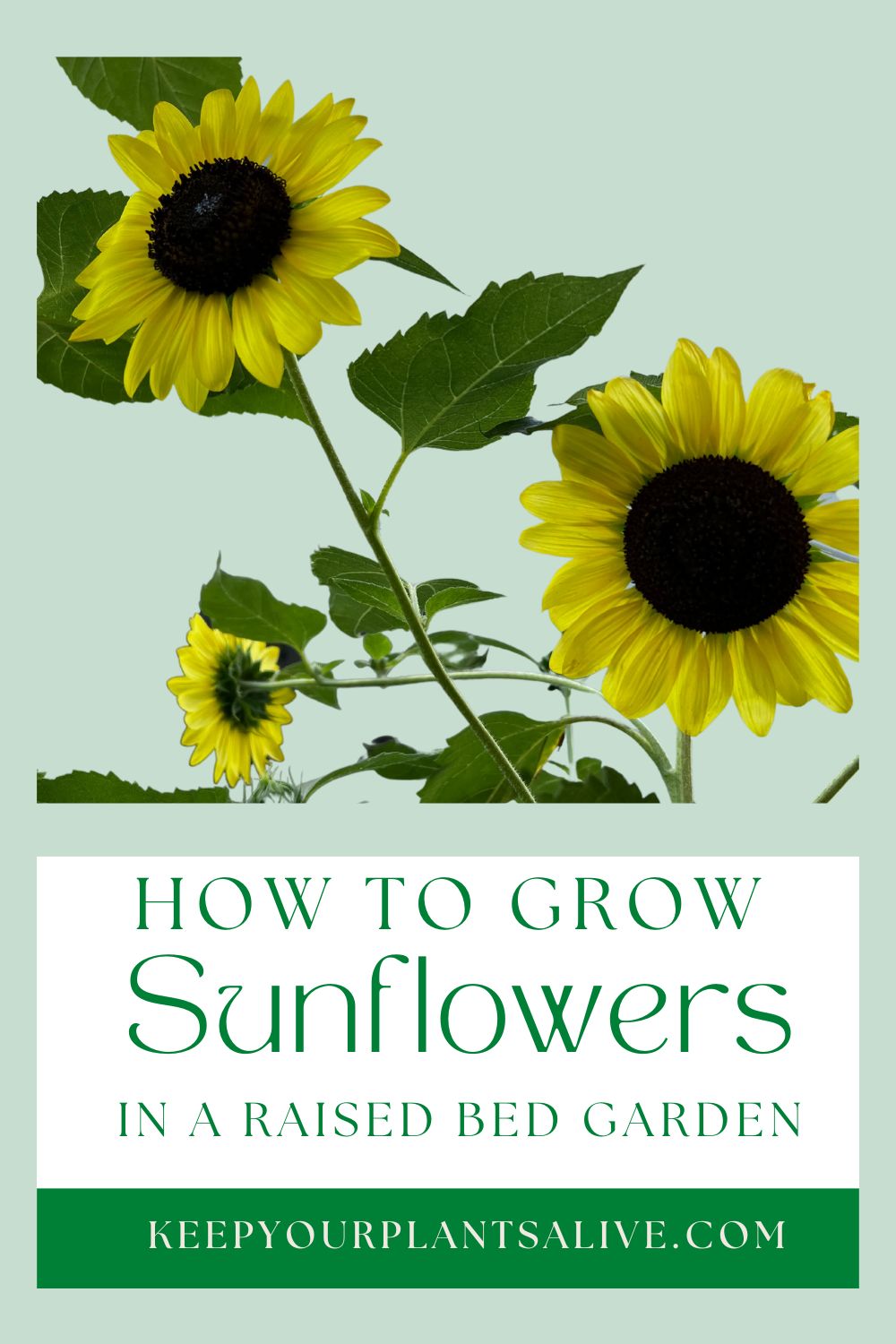The Ultimate Guide To Companion Planting In Raised Beds
The Ultimate Guide to Companion Planting in Raised Beds
Companion planting is a gardening practice that involves planting different types of plants together in a way that benefits them all. This can be done in any type of garden, but it is especially beneficial in raised beds. Raised beds offer a number of advantages for companion planting, including:
- Better drainage and aeration
- Warmer soil in the spring and fall
- Reduced risk of pests and diseases
- Easier access for weeding and harvesting
If you are new to companion planting, there are a few things you need to know. First, you need to understand the different types of companion plants. There are three main types:
- Attractants: These plants attract beneficial insects, such as ladybugs and pollinators, which help to control pests and improve pollination. Some common attractors include marigolds, nasturtiums, and chives.
- Repellents: These plants repel pests, such as aphids, cabbage moths, and tomato hornworms. Some common repellents include basil, garlic, and mint.
- Complements: These plants complement each other by improving their growth or flavor. For example, tomatoes and basil grow well together, and the tomatoes benefit from the basil's insect-repelling qualities.
Once you understand the different types of companion plants, you can start planning your garden. There are a number of resources available to help you with this, such as books, websites, and gardening apps. You can also ask your local nursery or garden center for advice.
When planning your companion planting scheme, there are a few things to keep in mind. First, consider the size of your raised beds. If you have limited space, you will need to choose plants that will grow well together and not compete for space. Second, think about the sun exposure in your garden. Some plants need full sun, while others prefer partial shade. Third, consider the climate in your area. Some plants are more cold-hardy than others.
Once you have considered all of these factors, you can start planting your companion plants. Be sure to follow the planting instructions on the plant tags. Once your plants are in the ground, you will need to water them regularly and fertilize them as needed. You should also keep an eye out for pests and diseases and take steps to control them.
With a little planning and effort, you can create a beautiful and productive garden using companion planting. Not only will your plants be healthier and more productive, but you will also be helping to promote a healthy ecosystem in your backyard.
Here are some additional tips for companion planting in raised beds:
- Plant tall plants on the north or west side of the bed, so they won't shade shorter plants.
- Group plants with similar water needs together.
- Use companion plants to help control pests and diseases. For example, planting marigolds near tomatoes can help to deter aphids.
- Experiment with different companion planting combinations to see what works best in your garden.
With a little trial and error, you will soon be an expert in companion planting. So get out there and start planning your garden!
Are you looking to grow a successful vegetable garden in your raised beds? If so, you need to know about companion planting! Companion planting is the practice of planting certain plants together that benefit each other in some way. For example, tomatoes and basil are often planted together because basil helps to repel tomato hornworms.
There are many different companion planting combinations that you can use in your raised beds. To find the best combinations for your specific needs, you can visit Gardenia Inspiration. This website has a comprehensive list of companion planting combinations, as well as tips on how to plant and care for your vegetables.
So what are you waiting for? Visit Gardenia Inspiration today and learn more about companion planting!
FAQ of best plants to grow together in raised beds
Q: What are some good companion plants for raised beds?
A: There are many great companion plants that can be grown together in raised beds. Some popular combinations include:
- Tomatoes and basil: Basil helps to deter pests from tomatoes, and the two plants also complement each other's flavors.
- Cucumbers and melons: These vining plants can be grown together in a trellis or fence, and they will help to shade the soil and keep it cool.
- Carrots and onions: These two root vegetables have different nutrient requirements, so they will not compete with each other for nutrients in the soil.
- Beans and peas: These legumes fix nitrogen in the soil, which can benefit other plants in the bed.
- Sunflowers and marigolds: Sunflowers attract pollinators, while marigolds help to deter pests.
Q: How do you organize plants in a raised bed?
A: When organizing plants in a raised bed, it is important to consider their height, spacing, and water needs. Taller plants should be placed in the back of the bed, while shorter plants should be placed in the front. Spacing requirements will vary depending on the type of plant, so be sure to check the plant tag for specific recommendations. Water needs should also be considered, and plants with similar water needs should be grouped together.
Q: What are some tips for companion planting in raised beds?
A: Here are a few tips for companion planting in raised beds:
- Do your research: Before you start planting, take some time to research which plants are compatible with each other. There are many resources available online and in gardening books.
- Consider the climate: The climate in your area will also affect which plants are best suited for companion planting. For example, in hot climates, you may want to plant heat-tolerant plants together.
- Experiment: There is no right or wrong way to companion plant, so don't be afraid to experiment and see what works best for you.
- Keep an eye on your plants: As your plants grow, keep an eye on them and make adjustments as needed. If you notice that one plant is not doing well, you may need to move it to a different location.
Q: What are some common mistakes to avoid when companion planting in raised beds?
A: Here are a few common mistakes to avoid when companion planting in raised beds:
- Not considering the plants' needs: It is important to consider the plants' height, spacing, and water needs when companion planting.
- Planting incompatible plants: Not all plants are compatible with each other. Do your research before you start planting to make sure that you are pairing compatible plants.
- Not monitoring your plants: As your plants grow, keep an eye on them and make adjustments as needed. If you notice that one plant is not doing well, you may need to move it to a different location.
- Not weeding regularly: Weeds can compete with your plants for water, nutrients, and sunlight. Make sure to weed regularly to give your plants the best chance of success.
Image of best plants to grow together in raised beds
Lettuce and tomatoes - These two leafy greens are also good companions in raised beds. Lettuce doesn't shade out tomatoes, and tomatoes provide support for lettuce plants. They also have similar water and nutrient requirements.

Basil and tomatoes - Basil is a classic companion plant for tomatoes. It helps to repel tomato pests and diseases, and its leaves can be used to flavor tomato dishes. Basil also prefers full sun and well-drained soil, just like tomatoes.
Peas and beans - Peas and beans are legumes, which means they can fix nitrogen in the soil. This makes them beneficial for other plants in the bed, as nitrogen is an essential nutrient for plant growth. Peas and beans also have different growth habits, so they can be planted together without competing for space.

Sunflowers and marigolds - Sunflowers and marigolds are both tall plants that can help to attract beneficial insects to the garden. Sunflowers attract pollinators, such as bees and butterflies, while marigolds repel pests, such as aphids and mosquitoes. They also have different bloom times, so they can provide interest in the garden for a long period of time.


Post a Comment for "The Ultimate Guide To Companion Planting In Raised Beds"